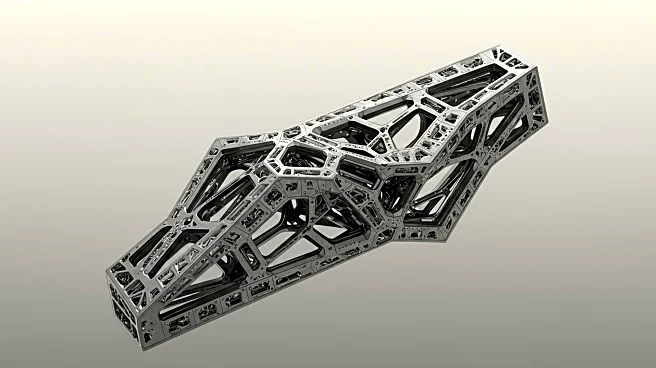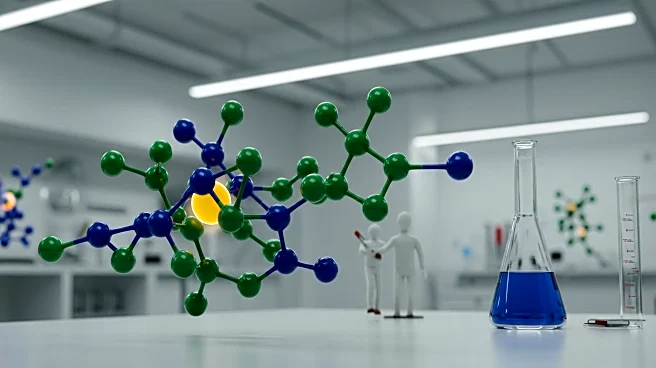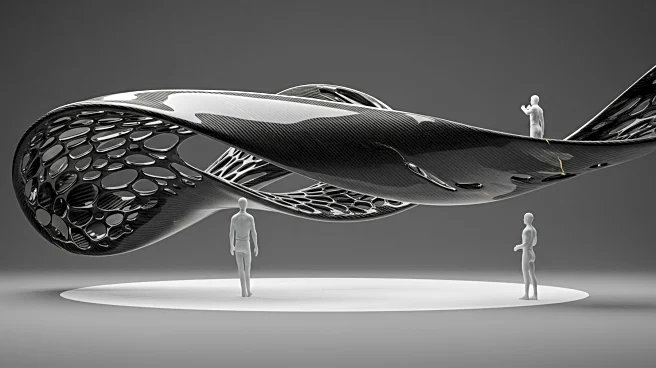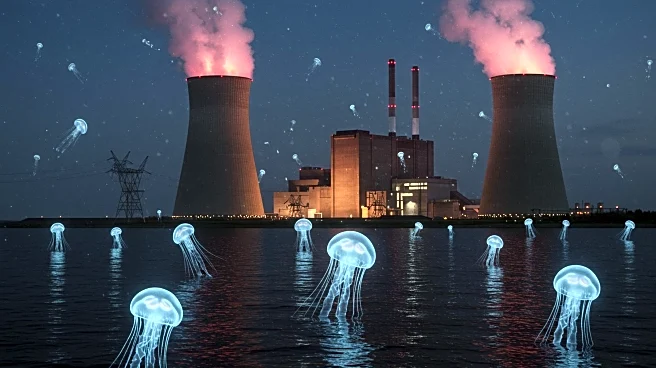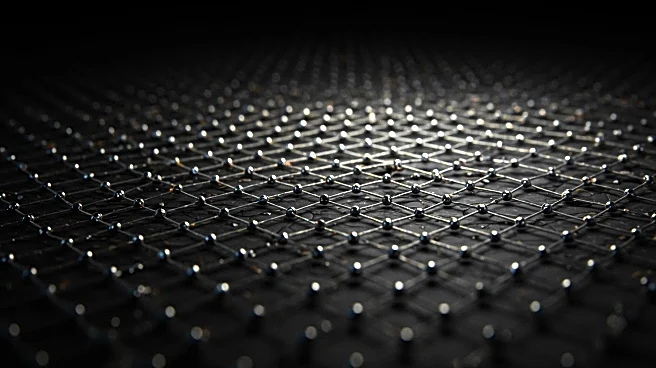What's Happening?
Recent advancements in the synthesis of metal-organic frameworks (MOFs) have led to the development of isoreticular moiré patterns with quasiperiodicity. These frameworks, synthesized using zirconium-based compounds, exhibit unique structural properties that differentiate them from traditional crystalline materials. The synthesis process involves precise control over chemical composition and atomic interactions, allowing for the creation of quasiperiodic patterns that can be systematically controlled. This development broadens the scope of material research, offering new opportunities for designing functional materials with specific properties. The synthesis techniques employed include the use of formic acid and dimethylformamide, with careful manipulation of synthesis conditions to achieve pure-phase MOFs.
Why It's Important?
The creation of quasiperiodic metal-organic frameworks represents a significant advancement in material science, with potential applications in various fields such as photonics, catalysis, and gas storage. These frameworks offer a platform for designing materials with tailored properties, which could lead to innovations in technology and industry. The ability to control quasiperiodic patterns at the atomic level opens up possibilities for developing materials with enhanced mechanical, optical, and chemical properties. This could impact industries reliant on advanced materials, such as electronics and renewable energy, by providing new solutions for efficiency and performance.
What's Next?
Future research will likely focus on exploring the applications of these quasiperiodic frameworks in real-world scenarios. Scientists may investigate their use in creating more efficient catalysts or in developing new types of sensors. Additionally, there may be efforts to scale up the synthesis process for industrial applications, ensuring that these materials can be produced in larger quantities while maintaining their unique properties. Collaboration between material scientists and industry professionals could accelerate the integration of these frameworks into commercial products.
Beyond the Headlines
The development of quasiperiodic metal-organic frameworks also raises questions about the ethical implications of advanced material design. As these materials become more prevalent, considerations regarding their environmental impact and sustainability will be crucial. Researchers may need to address the lifecycle of these materials, ensuring that their production and disposal do not harm the environment. Furthermore, the ability to design materials at the atomic level could lead to discussions about intellectual property and the ownership of material designs.
